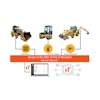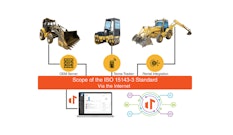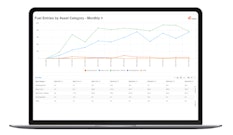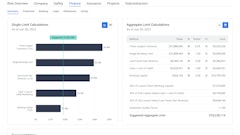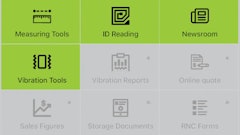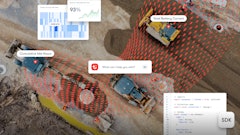
In today's digital landscape, cloud computing has become integral to how businesses operate and deliver services. However, not all cloud applications are created equal. The terms "cloud-native" and "cloud-connected" are often used interchangeably, but they represent fundamentally different approaches to leveraging cloud technology. Understanding the distinctions between these two models is crucial for organizations to make informed decisions that will enhance their operational efficiency, scalability, and performance. There’s a lot of “cloudy” terms out there, so what’s the difference?
The primary distinction between cloud-native and cloud-connected solutions lies in their architectural foundations. “Cloud-native” applications are designed from the ground up, specifically for cloud environments, employing microservices where each component communicates with others via APIs (Application Programming Interfaces), enabling seamless data exchange and integration across various business functions. This is a modular approach that allows organizations to innovate rapidly, making it easier to respond to fluctuating market demands without overhauling the entire system. This design allows for the decoupling of components, enabling independent updates and deployments without affecting the entire system, further fostering an environment that promotes innovation and rapid iteration.
"Cloud-connected," on the other hand, involves integrating existing on-premises applications with cloud services. It may even include a hybrid architecture where some components run in the cloud, while others remain on-premises. This approach allows for a gradual transition to the cloud, enabling organizations to adopt cloud capabilities at their own pace.
Companies that utilize cloud-connected tools have the flexibility to leverage cloud services for specific functionalities (data analytics, storage, etc.) while maintaining core systems on-premises.
One well-known advantage of cloud-connected systems – specifically in the heavy building materials industry – is their ability to function even in challenging conditions, such as when reliable internet connectivity is absent or during intermittent outages. With local processing capabilities, these systems continue to operate, ensuring that critical data is still captured, and tasks are executed without interruption. This resilience is paramount in construction environments where downtime can lead to significant financial losses and project delays.
What does cloud mean for me?
Better decisions.
One of the primary advantages of cloud technology is the ability to access real-time data from multiple locations. This capability enables companies to monitor operations, track inventory levels, and manage logistics seamlessly. By utilizing IoT-enabled technologies, cloud solutions encompass enhanced capabilities, including remote management and self-diagnostic features. Having up-to-date information at their fingertips allows businesses to make informed decisions quickly, reducing delays and improving overall productivity.
Seamless collaboration.
Another key benefit of cloud solutions is enhanced collaboration among teams. With cloud-based systems, employees can share documents, files, and project updates in real time, regardless of their physical location. This fosters a more connected work environment, where teams can collaborate effectively on projects, share insights, and streamline communication. As a result, the industry can tackle complex projects with greater efficiency and responsiveness to changing conditions.
Insights to improve.
How often do you get frustrated because you know there’s a kink in your operation, but you just can’t figure out where? How often are you flying by the seat of your pants? Cloud technology supports advanced analytics and reporting that delivers the insights that you need to not only survive, but to optimize and improve. By leveraging cloud-based tools, companies can analyze large volumes of data to identify trends, forecast demand, and optimize resource allocation. This analytical capability allows businesses to refine their operations, minimize costs, and enhance profitability. Access to sophisticated reporting tools also aids in compliance with industry regulations, ensuring that companies meet necessary standards and guidelines.
Reduction in expenses.
Cost savings represent another significant advantage of adopting cloud solutions. Traditional IT infrastructure can be costly to maintain, requiring investments in hardware, software, and personnel. Cloud solutions operate on a subscription basis, reducing upfront costs and allowing businesses to scale their services as needed. This flexibility enables companies to allocate resources more effectively and invest in other critical areas of their operations.
Robust security measures.
With the increasing prevalence of cyber threats, having robust security measures in place is crucial for the integrity of business operations. Cloud providers typically offer advanced security features, including encryption, regular backups, and monitoring services. This level of security helps protect sensitive data related to projects, clients, and financial transactions, giving companies peace of mind and allowing them to focus on their core business activities without fear of data breaches.
One platform to unify your cloud experience
Regardless of whether an organization opts for cloud-native or cloud-connected solutions, the value of a unified cloud experience cannot be overstated. A unified platform can provide a cohesive environment for managing all applications, data, and services and facilitates seamless integration between cloud-native applications and legacy systems, leading to improved efficiency and collaboration.
Command Alkon’s Command Cloud is an example of a next-generation platform that combines the benefits of cloud-native capabilities with the ability to support existing cloud-connected applications. This approach allows organizations to harness the full potential of their cloud investments while ensuring that legacy systems can still operate effectively. When applications are unified on a single platform, data sharing becomes more straightforward and efficient. With APIs enabling communication between various components, organizations can break down data silos and gain real-time insights across their operations. This interconnectedness fosters informed decision-making and enhances overall business agility.
A unified cloud experience allows organizations to scale their operations seamlessly. Whether they are running cloud-native applications or connecting legacy systems, businesses can adjust resources and capabilities on-demand to meet evolving needs. This flexibility is crucial in a rapidly changing business landscape where organizations must respond quickly to market shifts. By leveraging a unified cloud platform, organizations can optimize their resource usage and reduce operational costs. The ability to manage both cloud-native and cloud-connected applications in one environment minimizes the complexity associated with managing disparate systems. This can ultimately lead to significant savings in infrastructure and maintenance costs.
As organizations continue to embrace digital transformation, the distinction between cloud-native and cloud-connected solutions will become increasingly important. Companies that prioritize cloud-native development will likely gain a competitive edge, as these solutions offer the agility and scalability needed to thrive in the digital era. However, it is essential to recognize that cloud-connected solutions still hold value, particularly for organizations with existing investments in legacy systems. The key is finding a balance that allows businesses to leverage their current infrastructure while gradually transitioning to more cloud-native architectures.
Command Alkon's Aggregates and Asphalt Cloud solutions will be available in early 2025 for implementation and represent a significant step towards modernizing the industry. These products will cover all essential functionality and seamlessly integrate with existing and future plant automation equipment, offering unparalleled efficiency and integration advantages for vertically integrated businesses. For more information on Command Cloud, visit https://commandalkon.com/command-cloud/.

